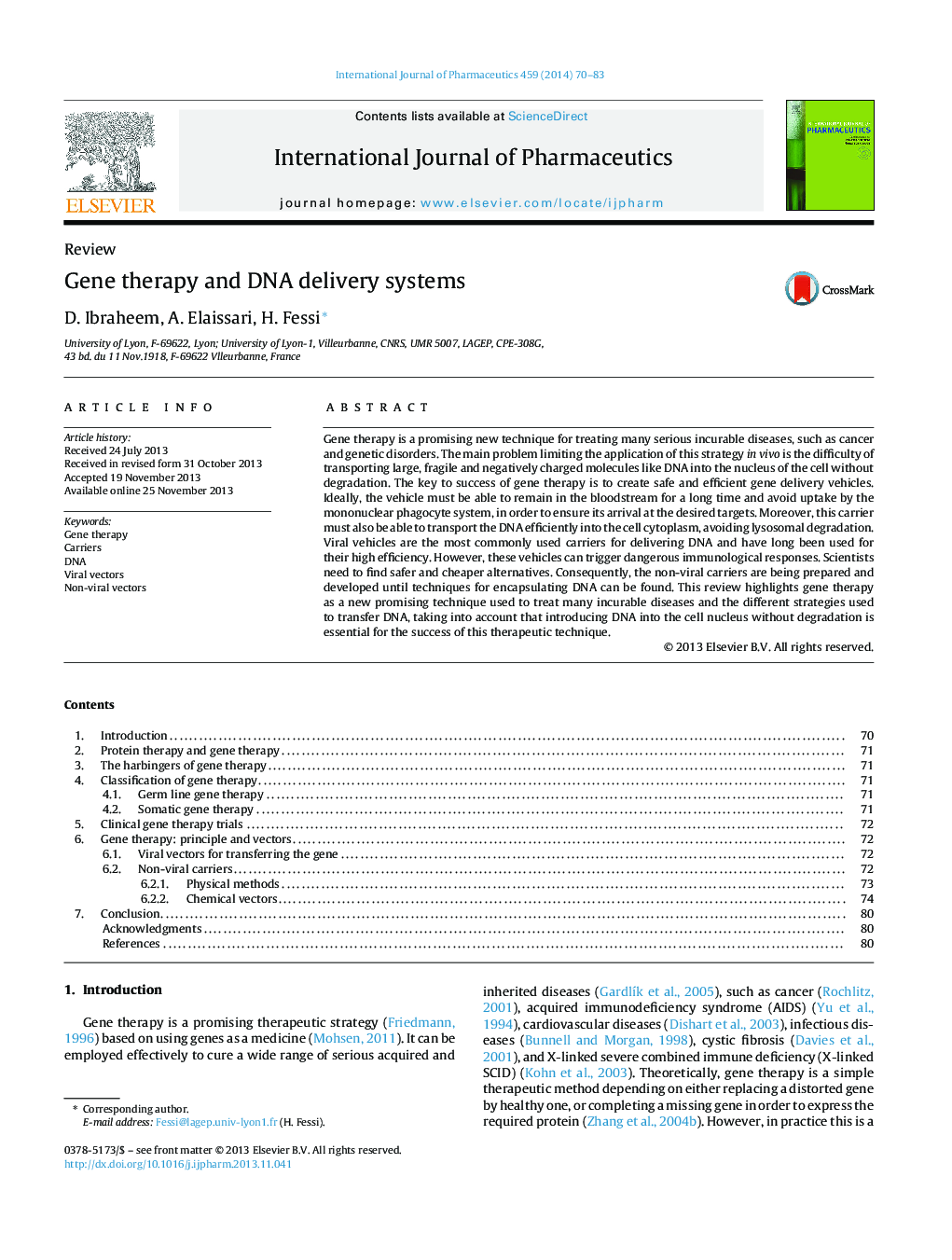| Article ID | Journal | Published Year | Pages | File Type |
|---|---|---|---|---|
| 2502016 | International Journal of Pharmaceutics | 2014 | 14 Pages |
Gene therapy is a promising new technique for treating many serious incurable diseases, such as cancer and genetic disorders. The main problem limiting the application of this strategy in vivo is the difficulty of transporting large, fragile and negatively charged molecules like DNA into the nucleus of the cell without degradation. The key to success of gene therapy is to create safe and efficient gene delivery vehicles. Ideally, the vehicle must be able to remain in the bloodstream for a long time and avoid uptake by the mononuclear phagocyte system, in order to ensure its arrival at the desired targets. Moreover, this carrier must also be able to transport the DNA efficiently into the cell cytoplasm, avoiding lysosomal degradation. Viral vehicles are the most commonly used carriers for delivering DNA and have long been used for their high efficiency. However, these vehicles can trigger dangerous immunological responses. Scientists need to find safer and cheaper alternatives. Consequently, the non-viral carriers are being prepared and developed until techniques for encapsulating DNA can be found. This review highlights gene therapy as a new promising technique used to treat many incurable diseases and the different strategies used to transfer DNA, taking into account that introducing DNA into the cell nucleus without degradation is essential for the success of this therapeutic technique.
Graphical abstractFigure optionsDownload full-size imageDownload high-quality image (108 K)Download as PowerPoint slide
